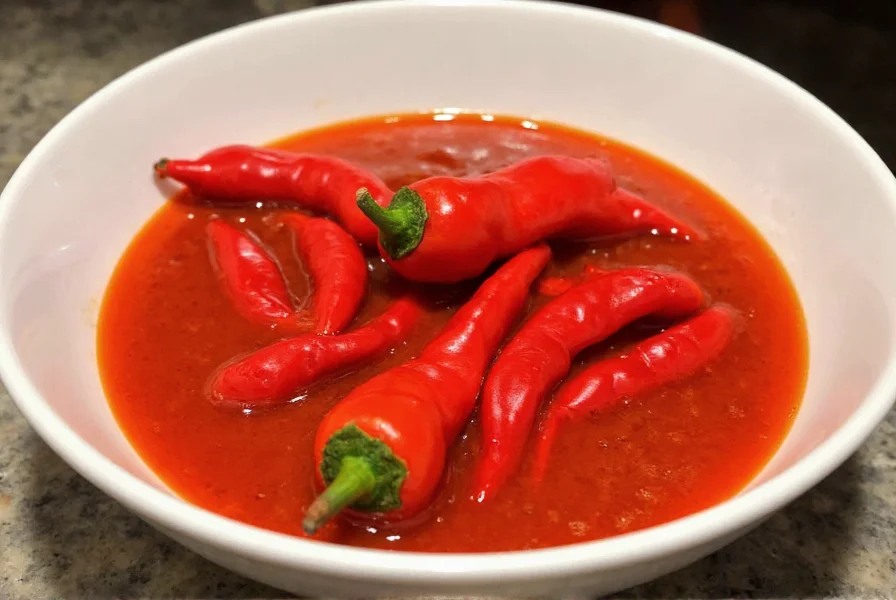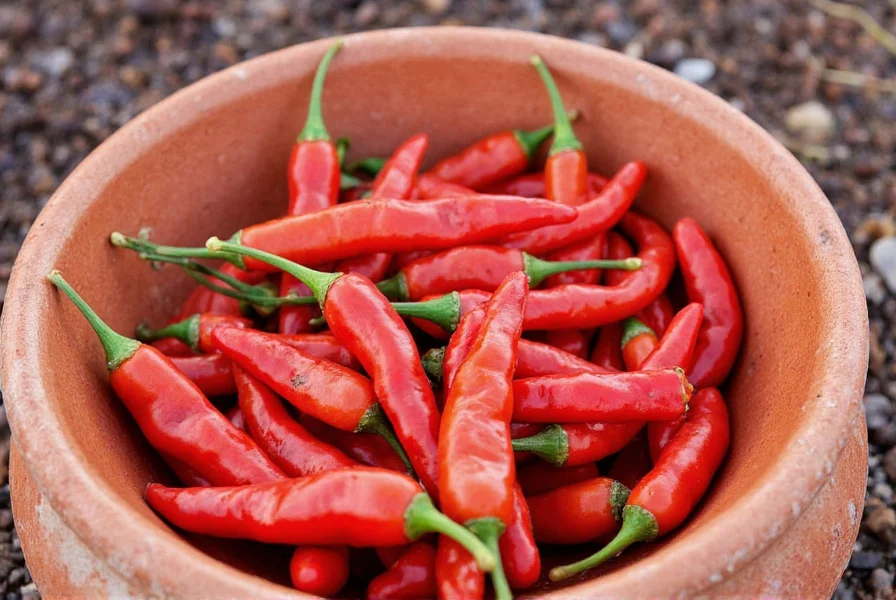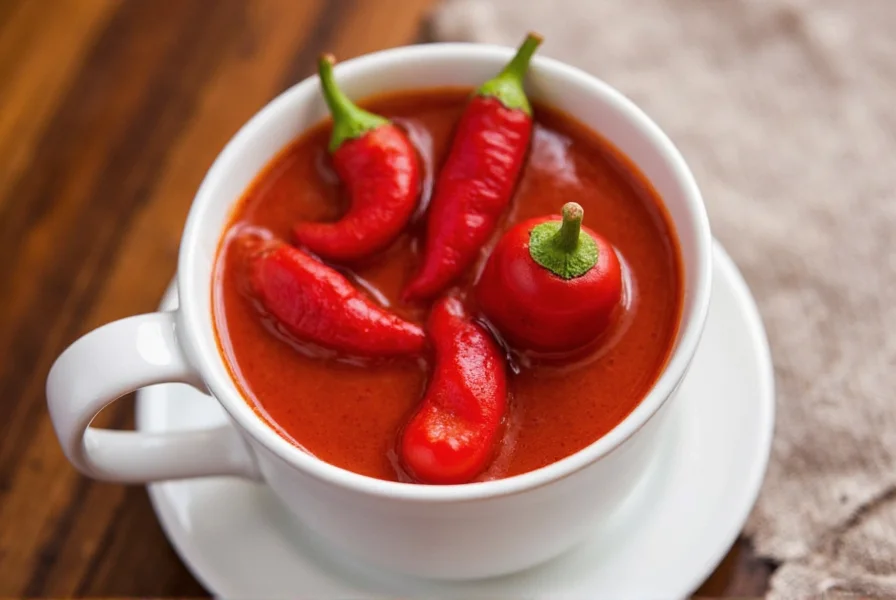Table of Contents
What Are NM Chile Pods?
NM Chile Pods (New Mexico Chile Pods) are dried red peppers harvested from the Capsicum annuum species, primarily grown in New Mexico's Hatch Valley region. These versatile dried chiles range from 1,000-5,000 Scoville Heat Units (SHU), offering mild to moderate heat with complex smoky-sweet flavor notes perfect for Southwestern and Mexican cuisine. Unlike hotter varieties, NM Chile Pods provide balanced heat that enhances dishes without overwhelming other ingredients, making them ideal for authentic red chile sauces, stews, and marinades.
NM Chile Pods Heat Level (1,000-5,000 SHU)
Understanding the precise heat level of NM Chile Pods is crucial for recipe success. These chiles register between 1,000-5,000 Scoville Heat Units, placing them in the mild-to-moderate category:

| Chile Type | Heat Range (SHU) | Heat Comparison | Flavor Characteristics |
|---|---|---|---|
| NM Chile Pod | 1,000 - 5,000 | 1/4 to 1/2 jalapeño | Smoky, earthy, slightly sweet with berry undertones |
| Jalapeño (fresh) | 2,500 - 8,000 | 1-2x hotter than NM Chile | Grassy, bright, vegetal |
| Ancho (dried poblano) | 1,000 - 2,000 | Slightly milder than NM Chile | Fruity, raisin-like, sweet |
| Guajillo | 2,500 - 5,000 | Similar heat, different flavor | Tangy, tea-like, berry notes |
Unlike hotter chiles that focus primarily on heat, NM Chile Pods deliver nuanced flavor complexity. The drying process concentrates their natural sugars while developing deep smoky notes. Heat intensity varies based on growing conditions - high-altitude New Mexico sun produces more flavorful but often milder pods compared to those grown in other regions.
Flavor Profile Characteristics
NM Chile Pods offer a distinctive flavor profile that makes them indispensable in Southwestern cooking:
- Primary notes: Earthy base with subtle fruitiness (dried cherry, raisin)
- Secondary notes: Mild smoke, coffee undertones, gentle sweetness
- Aftertaste: Clean finish without bitter notes common in some dried chiles
- Best flavor pairings: Tomatoes, garlic, cumin, onions, chocolate (for mole)
This balanced profile makes NM Chile Pods versatile across multiple cooking applications. Unlike single-note chiles, they contribute multiple flavor dimensions that develop beautifully when toasted or rehydrated properly.
Fresh vs Dried NM Chile Pods Comparison

While both fresh and dried forms originate from the same pepper, their culinary properties differ significantly:
| Characteristic | Fresh NM Chile | Dried NM Chile Pods |
|---|---|---|
| Availability | Seasonal (August-October) | Year-round |
| Flavor intensity | Milder, brighter flavor | 3-4x more concentrated flavor |
| Preparation time | Minimal (roast/peel) | Requires rehydration (15-20 min) |
| Storage life | 1-2 weeks refrigerated | 6-12 months properly stored |
| Best culinary uses | Ristras, fresh salsas, roasted pepper dishes | Red chile sauce, stews, moles, powders |
| Heat level | Slightly milder | More intense heat perception |
Professional chefs often use both forms in complementary ways - fresh chiles for immediate dishes and dried pods for sauces requiring deeper flavor complexity. For authentic New Mexican red chile sauce, dried pods are essential.
Best Cooking Applications and Recipes
NM Chile Pods shine in traditional Southwestern dishes where balanced heat and complex flavor are required:
Authentic Red Chile Sauce (The Essential Application)
This foundational New Mexican sauce demonstrates NM Chile Pods at their best. Proper preparation involves:
- Toast 8-10 dried pods in dry skillet 15-30 seconds per side
- Remove stems and seeds (for milder sauce)
- Rehydrate in hot water 15-20 minutes
- Blend with 2 cups water, 1 tsp garlic, 1/2 tsp oregano
- Simmer 20 minutes until thickened
Use as base for: carne adovada, enchiladas, posole, or as dipping sauce.
Professional Tips for Maximum Flavor
- Toast before use: Light toasting in dry skillet enhances smoky notes
- Seed strategically: Remove seeds for mild applications, keep some for authentic heat
- Bloom in oil: For stews, sauté rehydrated chiles in oil before adding liquids
- Acid balance: Add lime juice or vinegar to brighten finished dishes
- Layer flavors: Combine with other mild chiles (ancho, pasilla) for complexity
NM Chile Pods work particularly well in slow-cooked dishes where their flavor can develop fully. Avoid boiling rehydrated pods as this creates bitterness.
Where to Buy NM Chile Pods: Quality Selection Guide
Selecting high-quality NM Chile Pods requires attention to specific characteristics:
What to Look For When Purchasing
- Color: Deep, rich red (not brown or faded)
- Texture: Supple but not brittle (shouldn't crumble when bent)
- Smell: Earthy, slightly sweet aroma (avoid musty or moldy smells)
- Origin: Look for "Hatch" or "New Mexico" designation
- Harvest year: Current or previous year's harvest preferred
| Purchase Source | Quality Indicators | Price Range (per ounce) | Best For |
|---|---|---|---|
| Hatch Valley farms | Farm-direct, labeled harvest date | $2.50-$4.00 | Authentic New Mexican cooking |
| Specialty spice shops | Opaque containers, aroma seal | $1.75-$3.00 | Home chefs seeking quality |
| Online retailers | Customer reviews, freshness dates | $1.25-$2.50 | Convenience, hard-to-find varieties |
| Local grocery stores | Check for moisture damage, color | $0.75-$1.50 | Quick replacement, basic recipes |
Avoid pods that are extremely brittle, have white mold spots, or lack aroma. Premium NM Chile Pods should have flexible skins and release fragrance when rubbed between fingers. For the most authentic flavor, seek out "Hatch" labeled pods harvested during the August-October season.
Proper Storage Methods for Maximum Freshness

Maximize shelf life and flavor retention with these storage techniques:
- Airtight containers: Use glass jars with tight seals (not plastic bags)
- Dark location: Store in cupboard away from light and heat sources
- Moisture control: Add food-safe silica packets to prevent humidity damage
- Freezer storage: For long-term (up to 2 years), vacuum-seal and freeze
- Check periodically: Every 2-3 months for mold or aroma loss
Degraded NM Chile Pods lose their vibrant red color and develop musty odors. Properly stored, they maintain peak flavor for 6-12 months. Test older pods by steeping one in hot water - if the liquid lacks deep red color or rich aroma, replace your supply.
Frequently Asked Questions
What exactly are NM Chile Pods?
NM Chile Pods, also known as New Mexico Chile Pods, are dried forms of the long, red New Mexico chile pepper. They originate from the Hatch Valley region in New Mexico and are a staple in Southwestern American and Mexican cuisine. These pods are typically harvested when fully ripe (red stage) and then dried for extended shelf life and concentrated flavor.
How hot are NM Chile Pods on the Scoville scale?
NM Chile Pods typically range from 1,000 to 5,000 Scoville Heat Units (SHU), placing them on the milder end of the heat spectrum. For comparison, they're generally milder than jalapeños (2,500-8,000 SHU) but hotter than bell peppers (0 SHU). The heat can vary based on growing conditions, with New Mexico's high altitude and intense sunlight producing more flavorful but often milder pods.
What's the difference between NM Chile Pods and Hatch chiles?
All Hatch chiles are New Mexico chiles, but not all New Mexico chiles are Hatch chiles. Hatch is a specific valley in New Mexico that produces chiles with a distinctive flavor profile due to the region's unique soil and climate. "NM Chile Pods" is a more general term, while "Hatch" refers specifically to chiles grown in the Hatch Valley. True Hatch chiles are only harvested during a specific season (late summer to early fall).
Can I substitute NM Chile Pods with other chiles?
Yes, but with some flavor differences. Ancho chiles (dried poblanos) are a good substitute with similar heat levels but slightly fruitier flavor. Guajillo chiles work well too, though they're a bit hotter. For fresh applications, Anaheim peppers are the closest fresh equivalent. If you need more heat, consider adding a pinch of cayenne alongside your substitute.
How should I properly store NM Chile Pods?
Store dried NM Chile Pods in an airtight container in a cool, dark place. Properly stored, they'll maintain their flavor for 6-12 months. For longer storage (up to 2 years), keep them in the freezer in a vacuum-sealed bag. Fresh pods can be refrigerated for 1-2 weeks or frozen for longer storage. Always check for mold or off smells before using older pods.
What's the best way to rehydrate NM Chile Pods?
The best method is to toast the pods lightly in a dry skillet for 15-30 seconds per side until fragrant, then submerge them in hot (not boiling) water for 15-20 minutes until softened. This preserves more flavor than boiling them. For sauces and moles, some chefs prefer to toast then roast the pods before rehydrating for deeper flavor complexity.
Are NM Chile Pods and New Mexico chile powder the same thing?
Not exactly. NM Chile Pods are the whole dried peppers, while New Mexico chile powder is made by grinding these pods. However, commercial "New Mexico chile powder" sometimes contains additional spices or other chile varieties. For pure flavor, many chefs prefer grinding their own powder from whole pods.
What dishes work best with NM Chile Pods?
NM Chile Pods shine in traditional Southwestern and Mexican dishes like red chile sauce, posole, carne adovada, and enchilada sauce. They're also excellent in stews, braises, and mole sauces. Their moderate heat and complex flavor make them versatile for both meat and vegetarian dishes where you want flavor without overwhelming heat.










 浙公网安备
33010002000092号
浙公网安备
33010002000092号 浙B2-20120091-4
浙B2-20120091-4